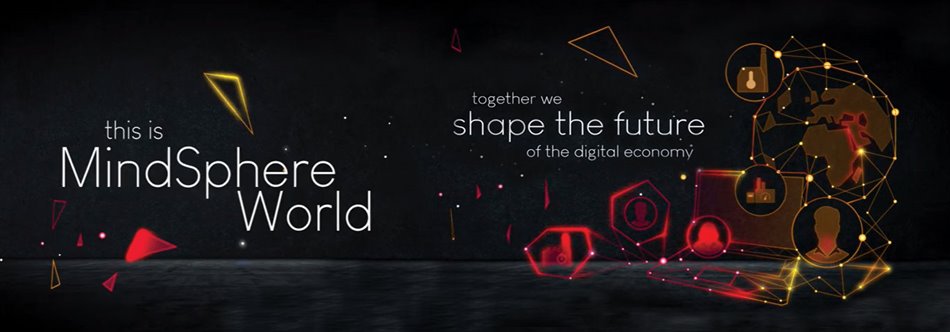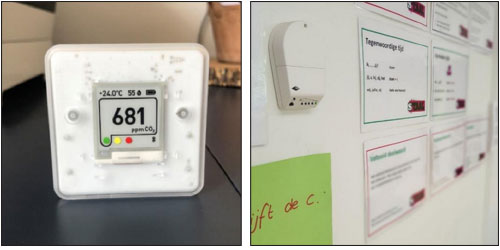- Industry Update
Summary
IoT efforts get new support in North America; cyberattackers turning to encrypted attacks during the pandemic; NEMA names new board of governors; and more.
Jump to:
- Industrial IoT efforts get new support in North America
- NEMA names new board of governors
- Cyberattackers turning to encrypted attacks during pandemic
- U.S. DOE Smart Manufacturing Institute announces new project call
- Industrial Internet Consortium releases COVID-19 response journal
- CO2 gas sensor technology breaks out
Industrial IoT efforts get new support in North America

In partnership with leading manufacturers and technology firms, MindSphere World has announced the formation of its newest chapter in North America. MindSphere World is a global community of companies and research institutions jointly shaping the future of the Industrial Internet of Things (IIoT).
Founded in 2018 by Siemens along with 18 partner companies, the organization was designed to expand Siemens’ MindSphere, an IIoT-as-a-service solution. It has since expanded into a broad IIoT community that focuses on the development of business models, proposals on requirements, and recommendations to create uniform rules for the use of data.
Founding board of directors members for the new North American chapter include representatives from Deloitte, Fiat Chrysler Automobiles (FCA), IBM, Siemens, and Valiant TMS. Further founding member companies—BEET, Edge2Web, Pure Precision, Gleason Corp, GROB Systems, Hardinge, MAYA HTT, Patti Engineering, TÜV SÜD, the University of Georgia, the University of South Carolina, and Wunderlich Malec Engineering—form “a powerful initial ecosystem of North American manufacturing interests,” said spokesman Michael Bowne.
As localized manufacturing efforts in the U.S., Canada, and Mexico continue to grow, companies are struggling with how to start their digital journey and how to use digital tools most effectively. MindSphere World aims to create “a platform to help accelerate the adoption of Industrial IoT and drive the digital transformation of manufacturing in the region.”
Part of that struggle includes the lack of standards and best practices. Steve Burris, with the Powertrain Controls Center of Competency for Fiat Chrysler Automobiles, said FCA is “known for our technological strength, and [we] know that IoT is the next frontier of productivity, quality, and innovation. We believe that MindSphere World will help us to identify and implement standards and best practices more effectively.”
MindSphere World’s mission is to create an environment in which thought leaders, research institutes, and manufacturers representing all sizes and markets can come together. The plan is to provide the manufacturing industry “a mechanism within an ecosystem” to determine typical IoT business models and how to leverage them, identify industry-specific use cases, share best practices, and develop and implement more efficient digital solutions.
NEMA names new board of governors

In her remarks at the virtual NEMA annual meeting, Clayton said, “We have faced many new challenges this year, and we saw accelerated demand for a digital world. It’s clear there is a need for new electrical infrastructure that is intelligent and supportive of renewable and sustainable environments.”
“It’s time to move NEMA beyond efficiency,” Clayton added. “Together, we can move to a holistic energy system that is connected, cybersecure, renewable, sustainable, and intelligent.”
In addition to Clayton, the NEMA board of governors elected a slate of officers: vice chair Richard Stinson, Southwire Company; treasurer Jack Nehlig, Phoenix Contact; and immediate past-chair Raj Batra, Siemens USA. The members also elected four individuals to fill vacancies on the board of governors: Bryan Mulligan of Applied Information, Inc; Michael Plaster of ABB; Richard K. Reece of Acuity Brands, Inc.; and Anders Sjoelin of S&C Electric Company.
NEMA president and CEO Kevin J. Cosgriff said Clayton’s experience “will be especially important to incorporating the economic and other lessons of 2020 as we plot a course to enhance further the lives of citizens, the health of our businesses, and the well-being of our country in the years ahead.”
Cyberattackers turning to encrypted attacks during pandemic
Cloud-security vendor Zscaler, Inc. released its 2020 State of Encrypted Attacks report, which compiles new threat research published by the Zscaler ThreatLabZ team. The research reveals the emerging techniques and affected industries behind a 260 percent spike in attacks using encrypted channels to bypass legacy security controls.
COVID-19 is driving a ransomware surge, with Zscaler researchers witnessing a fivefold increase in ransomware attacks over encrypted traffic beginning in March. Phishing attacks rose in 2020, with the manufacturing sector being the most targeted (38.6 percent) followed by services (13.8 percent) and healthcare (10.9 percent). As one of the most commonly used attacks over SSL, phishing attempts reached more than 193 million instances during the first nine months of 2020, according to the report.
The research revealed the top industries under attack by SSL-based threats were: healthcare at 1.6 billion (25.5 percent), finance and insurance at 1.2 billion (18.3 percent), manufacturing at 1.1 billion (17.4 percent), government at 952 million (14.3 percent), and services at 730 million (13.8 percent).The report provides guidance on how information technology and security leaders can protect their enterprises from the rising trend of encrypted threats, based on insight sourced from over 6.6 billion encrypted threats across the Zscaler cloud from January through September 2020.
U.S. DOE Smart Manufacturing Institute announces new project call

CESMII seeks research and development projects that can apply smart manufacturing solutions to real-world manufacturing process and operation challenges for improved energy productivity, performance, quality, and efficiency. For this request for proposals, CESMII anticipates making awards with periods of performance of up to six months. Industry partners must provide at least 50 percent of the total project funding. Projects may range from $50,000 to $200,000 (federal + cost share).
Learn more about the application deadlines, areas of emphasis, and submission requirements at www.cesmii.org.
“Smart manufacturing technologies have potential application and impact across the entire manufacturing sector. Creating innovations in new, integrated, systematic processes with a highly skilled smart manufacturing workforce and vibrant supply chain is vital to a global transformation of the manufacturing industry,” said deputy assistant secretary for energy efficiency Alex Fitzsimmons. “DOE’s investments in smart manufacturing allow the American manufacturing sector to become more productive, more energy-efficient, and more competitive on a global scale.”
Industrial Internet Consortium releases COVID-19 response journal
The 15th edition of the Journal of Innovation (JoI) from the Industrial Internet Consortium (IIC) is focused on “IoT enabling fast response to COVID and other pandemics.” This edition shows how IoT will play a crucial role in helping IT organizations adjust to the “new normal” being ushered in by the novel coronavirus, from working at home to social distancing.
“The impact on global business has been unprecedented, as millions of workers have moved their offices to their homes,” said Edy Liongosari, cochair of the IIC Thought Leadership Task Group and chief research scientist for Accenture Labs. “In this edition of the JoI, IIC members discuss how IoT can help companies protect themselves and others now and [in the] aftermath of the pandemic.” Guidance includes:- “IoT-Enabled Global Process Validation System with Advanced Process Control (APC) Capabilities for Global Production Rollout of COVID-19 Vaccines,” by Ramya Mopidevi of SAS Institute, which describes IoT processes for ensuring high manufacturing quality and accelerating production at the same time.
- “Physical Distancing and Crowd Density Monitoring Using Computer Vision,” by several authors from SAS Institute, including Saurabh Mishra, Hamza Ghadyali, Kedar Prabhud, Varunraj Valsaraj, Hardi Desai, and Ravi Shankar Subramanian. The article provides an analysis of physical distance compliance in everyday spaces using video, deep learning, and streaming analytics.
- “COVID-19 Can Create Opportunity for IoT in the Caribbean: A Necessary Digital Transformation,” by Jason Robert Rameshwar, The University of the West Indies, presents results of a survey that explores the potential of smart devices during the pandemic.
CO2 gas sensor technology breaks out

The IDTechEx report “Environmental Gas Sensors 2020–2030,” benchmarks the performance, cost, and manufacturing maturity for various gas sensing technologies. While electrochemical gas sensors and metal oxide semiconductor gas sensors are cheaper and smaller, says the report, NDIR gas sensors are more reliable and sensitive for CO2 monitoring.
Infineon launched new CO2 environmental sensors based on photoacoustic technology. This new product is believed to perform at a similar level as NDIR gas sensors at a significantly lower cost. Photoacoustic-based CO2 gas sensors are also provided by Sensirion. Both companies report increasing demand for such CO2 gas sensors for HVAC systems and indoor air quality applications.
This new trend will boost the potential market for CO2 gas sensors. IDTechEx predicts that more than 50K gas sensors will be installed in Germany alone in 2021 and the demand for CO2 gas sensors globally will exceed 1 million units if other European countries and the U.S. government decide to follow the same path.
Reader Feedback
We want to hear from you! Please send us your comments and questions about this topic to InTechmagazine@isa.org.


